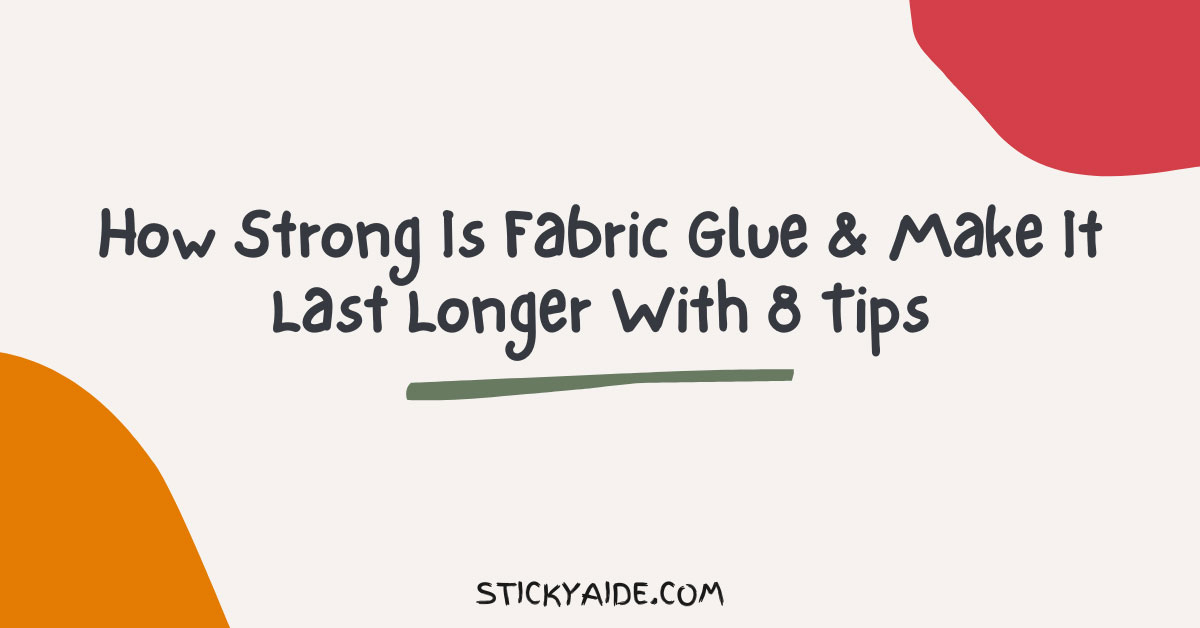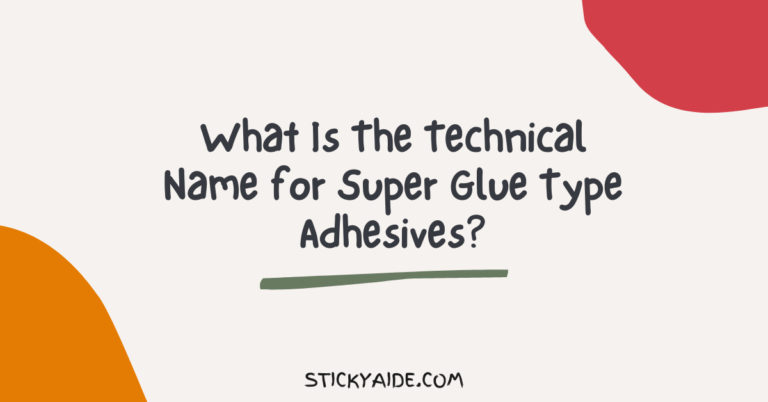Fabric glue can be used in many different situations, from temporary fixes to holding precious fabrics together for a more extended period of time. Because it’s so versatile, it’s helpful to know how strong the glue is and what you can use it for so you get the most out of your purchase.
Here are some tips on how to use fabric glue properly and some other information about its strength that will help you determine whether or not fabric glue is the best option for your particular situation.
How Strong Is Fabric Glue?
Fabric glue is an effective and strong adhesive to keep the fabric together. It doesn’t just work on fabric but can also be used on other materials. It is made of a water-based acrylic resin, making it safe for use on delicate fabrics such as lace, silk, or wool. It dries clear and resists yellowing with age.
Read More: How to Use Spray Adhesive on Fabric?
How to Make Fabric Glue Last Longer?
1) Is there an expiration date?
Fabric glue can expire, so it’s essential to check the package. Look for a best-before date or an expiration date on the label, and make sure you use it by that date. If there is no expiration date, follow the manufacturer’s storage instructions.
2) Be patient – don’t rush it
Fabric glue is a great product for quilters. But if you make a mistake with it, it can be hard to fix. So, be patient while applying. If the fabric moves before the glue have set, there’s not much that can be done except clean up and start again. If you find your fabric is moving before the glue has set, don’t despair! Start over by letting the original application dry completely and then adding more.
3) Thickness can be important
The thickness of the glue can be important because the thicker it is, the stronger and more durable it will be. You may also want to consider how much fabric you are using when deciding what type to use. The thicker the fabric, the stronger your glue should be.
4) Don’t worry about bubbles
A good fabric glue will not create bubbles. Bubbles indicate that the adhesive is settling into the pores of the fabric and making it stiff and difficult to work with. To avoid this, make sure you use fabric glue designed specifically for sewing and crafting, not a household adhesive like Elmer’s or super glue.
5) Remove Excess glue from the fabric
Remove excess glue from the fabric with a wet paper towel before it dries. This is especially important if you are using pre-washed fabric. For stubborn glue, use the tips of your fingers to remove the glue, being careful not to pull on the fabric.
6) If a stain happens, wash immediately
You can do a few things to help your clothes last longer. If a stain happens, wash immediately with cold water and use a laundry detergent that doesn’t contain bleach.
The sooner you start working on the stain, the better! Next, read the garment label for fabric care instructions and follow them exactly.
When storing clothes in drawers or shelves, be sure not to stack anything on top of them—doing so will cause the fabric to wrinkle more easily.
7) Let your items dry before using again
One of the most important tips is to let your items dry before using them again. Not only will it help prevent any future problems, but it’ll make sure that any residual glue has completely dried and hardened.
8) Let it cure completely
The strength of fabric glue is measured in minutes, so it is important to let the glue cure for 24 hours before use. This will ensure that the bond is strong and durable.
How Long Does Fabric Glue Last on Clothes?
Fabric glue is a great way to turn an old shirt or dress into something new. But how long does fabric glue last? Surprisingly it can last up to six to eight washings.
That said, this will vary depending on the fabric glue used and the type of fabric.
What Can Fabric Glue Be Used For?
Fabric glue is a flexible adhesive used to mend and repair flexible materials such as vinyl seats, cushions, clothing, tarps, and camping equipment. The fabric glue’s strength depends on the material being glued together, but it will typically hold in place when applied to thinner fabrics with seams or sewing lines.
Last Opinion
In conclusion, fabric glues are great for sticking together but can also be messy. The best way to avoid spills is to clean the area with a damp cloth before applying the glue.
Keeping a wet paper towel or dishcloth nearby can help reduce the mess and soak up any liquid that seeps through from below. You should also work quickly and avoid overlapping your fabrics too much when securing them with glue.







